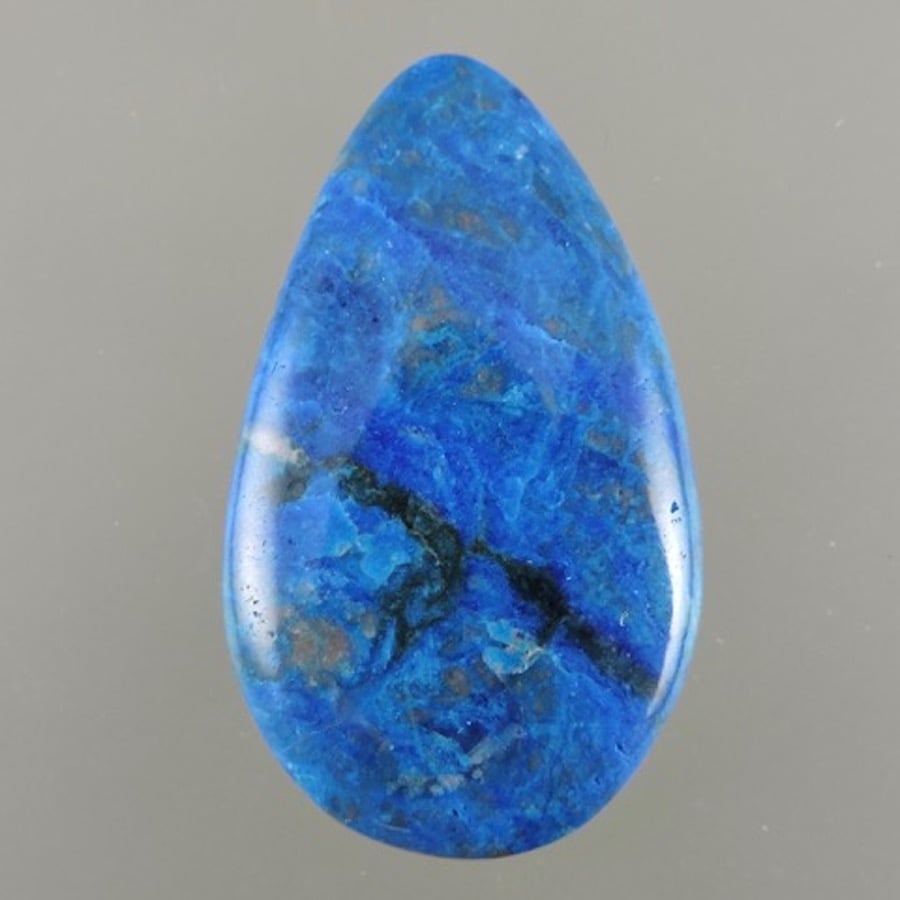Papagoite Value, Price, and Jewelry Information
Cerulean blue papagoite crystals are too small for faceting. However, massive material mixed with quartz can be cabbed, while quartz crystals with papagoite inclusions make striking specimens for collectors.
1 Minute Read
Cerulean blue papagoite crystals are too small for faceting. However, massive material mixed with quartz can be cabbed, while quartz crystals with papagoite inclusions make striking specimens for collectors.
Start an IGS Membership today
for full access to our price guide (updated monthly).Papagoite Value
Does Papagoite Make a Good Jewelry Stone?
Papagoite was originally found as tiny crystals associated with blueish green ajoite in Ajo, Pima County, Arizona. This microcrystalline material isn't cuttable. However, massive papagoite found mixed with quartz has greater hardness and wearability. It can also take a high polish, which makes it suitable for cabbing. These opaque to translucent cabs can have a vitreous luster.
Identifying Characteristics
Under magnification, you can see a regular interlocking structure in massive papagoite/quartz. You may also find tiny metallic copper crystal inclusions. These papagoites may look like more well-known chrysocolla or turquoise gems.
Papagoites leave a light blue streak. Please note that streak testing can destroy your specimen. Never perform this test on a finished gem and only do it as a last resort to identify rough.
In South Africa, papagoites can occur as inclusions within quartz crystals.
Are There Synthetic Papagoites?
No synthetic or lab-made papagoites are known to exist.
There are no known treatments for this material.
Where is Papagoite Found?
Arizona and South Africa are the principal producers of this rare gem material. Other sources include Namibia and Slovakia.
Stone Sizes
Lapidaries can cut cabs up to several inches in length from the massive material.
How to Care for Papagoites
Clean microcrystalline specimens only with a soft brush, mild detergent, and warm water. Durable cabochons cut from massive material have no special care requirements. For more care recommendations, consult our gemstone jewelry cleaning guide.
Joel E. Arem, Ph.D., FGA
Dr. Joel E. Arem has more than 60 years of experience in the world of gems and minerals. After obtaining his Ph.D. in Mineralogy from Harvard University, he has published numerous books that are still among the most widely used references and guidebooks on crystals, gems and minerals in the world.
Co-founder and President of numerous organizations, Dr. Arem has enjoyed a lifelong career in mineralogy and gemology. He has been a Smithsonian scientist and Curator, a consultant to many well-known companies and institutions, and a prolific author and speaker. Although his main activities have been as a gem cutter and dealer, his focus has always been education. joelarem.com
International Gem Society
Related Articles
Black Diamond Value, Price, and Jewelry Information
Chameleon Diamond Value, Price, and Jewelry Information
Gray Diamond Value, Price, and Jewelry Information
Green Diamond Value, Price, and Jewelry Information
Latest Articles
Ruby and Sapphire Survey: Where Do You Draw the Line?
Quartz Toxicity: Understanding the Risks for Jewelers and Wearers
Synthetic Amethyst: What is it and How is it Made?
Hambergite Value, Price, and Jewelry Information
Never Stop Learning
When you join the IGS community, you get trusted diamond & gemstone information when you need it.
Get Gemology Insights
Get started with the International Gem Society’s free guide to gemstone identification. Join our weekly newsletter & get a free copy of the Gem ID Checklist!
